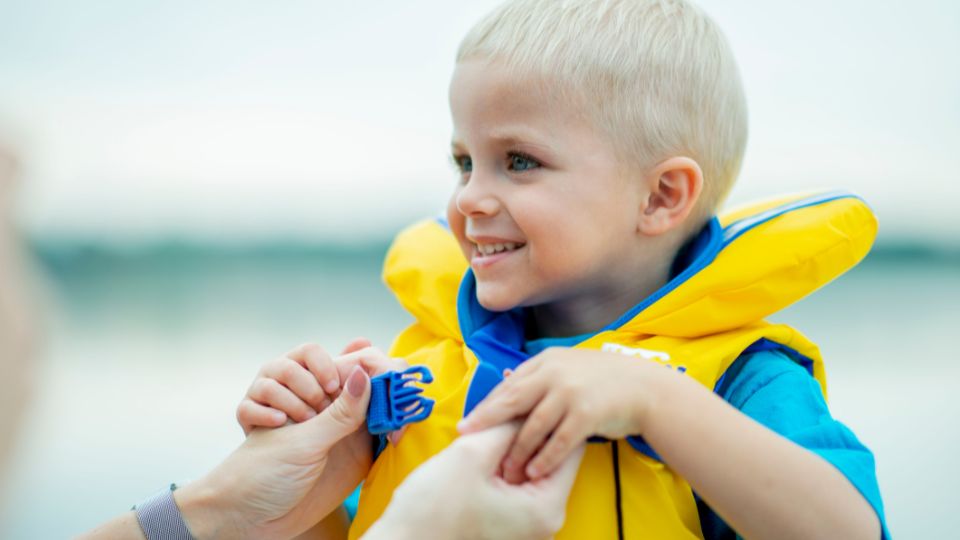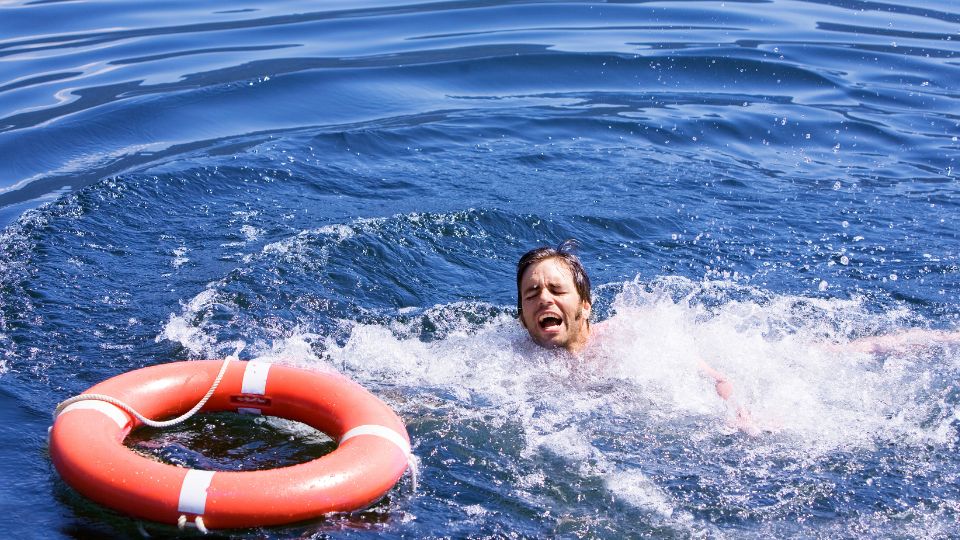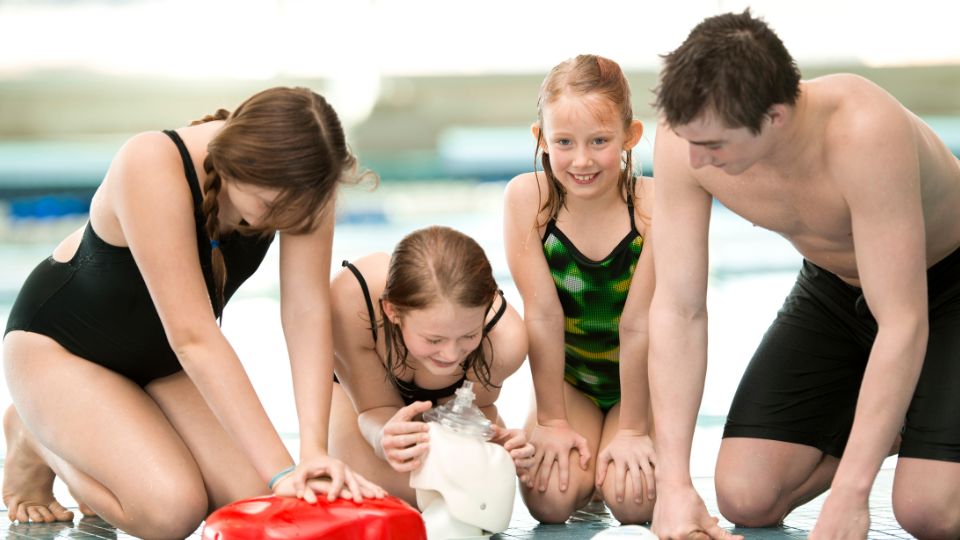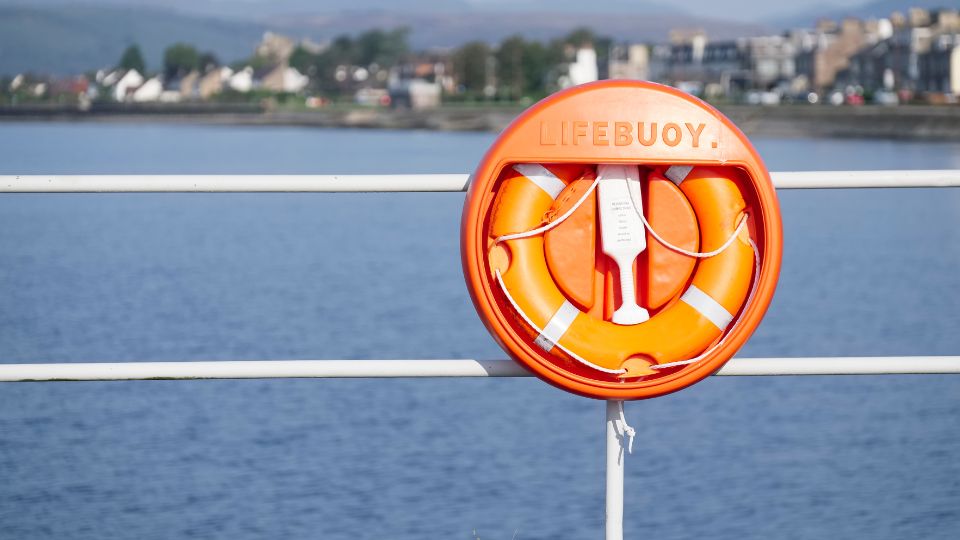WATER SAFETY BASICS ON GOLD COAST WATERWAYS
Water Safety is a part of everyday Australian life. We grow up surrounded by vast volumes of enticing azure blue water. Part of the education program for Australian School Children is a learn to swim unit. A water safety unit undertaken over three years in primary school ensures every child can swim confidently and understands the dangers water can pose in the least likely places you might not stop and give thought to for a minute.
Whether at the beach or in your backyard swimming pool, it only takes seconds for a toddler to reach out and fall in. Did you know drowning is one of the major causes of unintentional death for children five (5) years old and under? Toddlers can drown in as little as a few centimetres of water. That means items we don’t stop for one minute to consider as a potential fatality in waiting, like buckets, inflatable/toddler wading pools, fishponds, dams on farms, and even pet water bowls, can all pose potential dangers.

It is never too early to start teaching your child about water safety. Children seem to have the magical ability to move at the speed of light. One moment they are a safe distance away from the water, and in the blink of an eye, they have fallen into it, and you are left to wonder how they covered the distance. You only turned your back for a moment to reach for your ringing phone or to check on another child. Here are some preventative measures you can take to reduce the risk of drowning in young children:
- Have them wear the correctly sized and fitted life jackets and life-saving floatation devices anytime they are near a body of water to prevent drowning.
- Install anti-slip surfaces in tubs and showers and around pool edges
- Teach them not to swim alone or without supervision
- Teach them not to reach for things floating in the water
- Always be aware of where toddlers are and what objects may pose a potential hazard for drowning or might be an enticement floating in the pool they want.
- Four steps you can take to avoid drowning in children are:
- Supervision at all times is critical!
Older children can and occasionally do, drown while adults are watching them before they even realise what is happening. Older children who are believed to be able to swim can sink under the surface and be mistaken for ‘playing a game’ so it is crucial that the following steps are taken:
- Restrict access to the water source with safety fencing or childproof devices. It might not stop a determined child but will slow them down, and that may be all the time you need to prevent a disaster.
- Teach your children Water Awareness and have the appropriate safety measures in easy reach to facilitate a rescue correctly. Teach your children how to rescue others in the water from the safety position and have them practice under supervision as the rescuer and the drowning victim. Children who are Water Safety Aware take fewer risks and are quick to spot risky behaviour in other children.
- CPR/ First Aid Knowledge is a skill every person on earth should be taught. Even young children of five can perform CPR and save a life. The younger they start learning the skills, the more automatic it becomes should the need arise to employ CPR in any situation required.
Adult Drowning Via Alcohol

Adults are no less susceptible to unintentional drowning. Alcohol and swimming tend not to be a good combination. Alcohol and water are a terrible combination that should never be undertaken together. Alcohol slows the reflexes and dulls the ability to think quickly. At the same time, ironically, it makes individuals feel over-confident and better able to swim and handle themselves in the water.
The best method is to keep alcohol for the after event when the swimming portion of your day has been concluded. Try to prevent your friends or loved ones who are intoxicated from making a bad decision and entering the water, where it is possible to do so, and search for rescue equipment in the form of ropes or lifebuoys if they are available in the immediate vicinity. They won’t always be accessible, and this is why so many Australians drown each year unintentionally.
Alcohol plays a large part in Australian culture, and having a beer or two while fishing never hurt anyone, but more than two while you are on the water, and you could quickly end up taking a swim that becomes a ‘life or death’ situation.
Visitors from countries not surrounded by water and who have never taken swimming lessons have little to no water safety skills. They often fall victim to the enticing and cool serine looking waters of our oceans, rivers and pools and quickly find themselves in a drowning situation.
Not all drownings are fatal in nature, but they all have the potential to be deadly and that potential can be negated by having basic water safety skills.
Basic Water Safety First Aid Course

Enquire today about taking one of our new and coming Basic Water Safety First Aid Courses. Spend a few hours on the water and learn the skills required to save a life while on and in the water. Providing First Aid on the water can be significantly more difficult than imagined if the water, swell, currents and wind are not in your favour.
If you like First Aid and being on the water, consider combining the two and taking one of our upcoming Party Boat First Aid On The Water courses. This course is delivered on-demand and requires a minimum number of people.
Topics covered in this course will include things like:
- CPR
- First Aid For Drowning
- Treating open wounds and broken bones at sea
- Head wounds, concussion, and unconsciousness at sea
- When to call for assistance and what code to use “Pan-Pan”, “Securite” or “Mayday”.
- Water Safety
If your interest has been piqued and you would like more information on this course, or you would like to make a group booking, don’t hesitate to get in touch with us here, and we will be happy to answer any questions you have regarding this soon to be added option.

